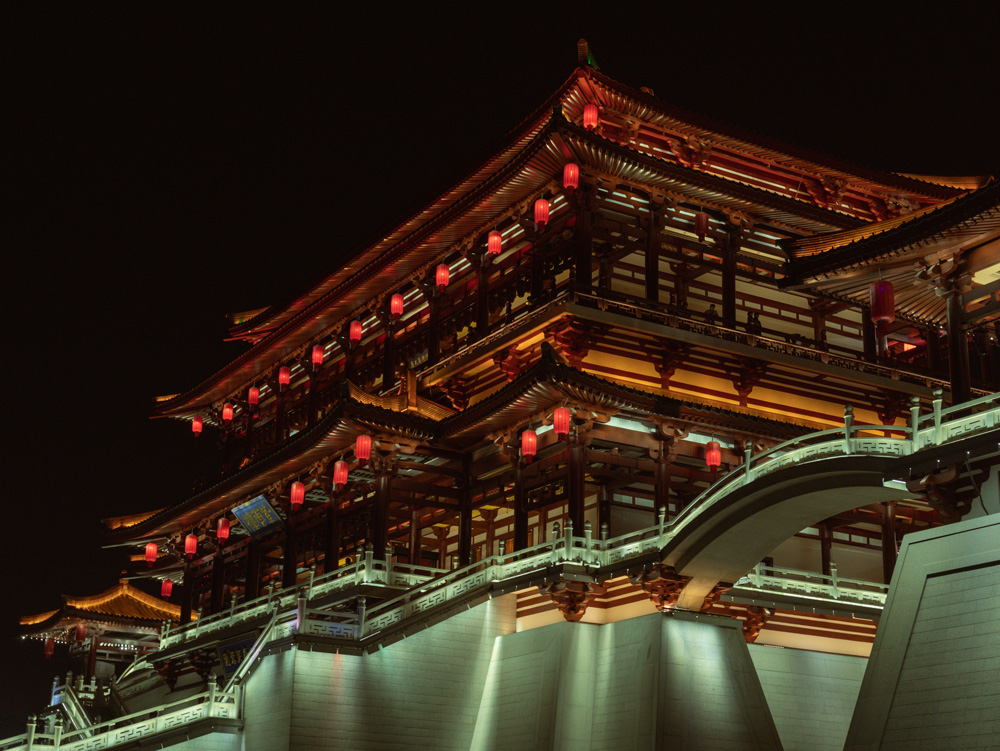Nestled in the heart of China’s Shaanxi province, Xi’an is a city that encapsulates the essence of the country’s rich history, culture, and heritage. With a history spanning over 3,000 years, Xi’an holds the distinction of being one of China’s oldest and most significant cities. Its storied past is reflected in its ancient architecture, archaeological wonders, and vibrant local life. This article takes you on a journey to explore the timeless beauty of Xi’an, offering a glimpse into its historical treasures and modern charms.
A Glimpse into the Past: The Ancient City Wall
Xi’an’s most iconic symbol is its remarkably preserved city wall, a testament to its historical significance as an ancient capital. The wall stretches over 13 kilometers in length and stands as one of the most complete city walls in China. Originally constructed during the Ming Dynasty, the wall served as a formidable defense system and housed military facilities. Today, it serves as a stunning landmark that visitors can traverse by foot or even rent bicycles to cycle along its ramparts. The panoramic view from the wall offers a unique perspective of the city, where modern skyscrapers coexist harmoniously with traditional architecture.
Terracotta Warriors: Guardians of an Emperor’s Legacy
No visit to Xi’an is complete without witnessing the awe-inspiring Terracotta Army, a UNESCO World Heritage site. Discovered in 1974, this monumental archaeological find consists of thousands of life-sized terracotta soldiers, horses, and chariots that were created to accompany China’s first emperor, Qin Shi Huang, in the afterlife. The intricate details of each individual figure showcase the craftsmanship of ancient artisans. The accompanying museum provides valuable insights into the historical context and the painstaking process of excavation and restoration.
The Enchanting Muslim Quarter: Where Cultures Converge
Xi’an’s cultural diversity is beautifully exemplified by the Muslim Quarter, a bustling neighborhood teeming with shops, stalls, and eateries. This vibrant area is home to the Great Mosque, a harmonious blend of Islamic and traditional Chinese architectural styles. The intricate wooden carvings and tranquil courtyards offer a peaceful escape from the hustle and bustle outside. Exploring the streets of the Muslim Quarter is a sensory delight, with the aroma of various street foods wafting through the air. Sample local delicacies such as “yangrou paomo,” a savory lamb stew served with shredded flatbread that has been soaked in the broth.
The Bell and Drum Towers: Guardians of Time
Xi’an’s Bell and Drum Towers stand as architectural marvels that once helped regulate the city’s daily activities. The Bell Tower, located at the city’s center, houses a massive bell that was struck to mark the beginning of the day. The Drum Tower, situated nearby, features a collection of ancient drums that were beaten to signal the end of the day. Visitors can climb to the top of these towers and enjoy panoramic views of the city, while gaining insight into the historical significance of timekeeping in ancient China.
Culinary Delights: Savory Treasures of Xi’an
Xi’an’s culinary scene is a tantalizing journey through flavors that have been perfected over generations. One cannot miss out on trying the city’s most famous dish, the “Xi’an Roujiamo,” often referred to as a Chinese hamburger. This delectable street food consists of shredded meat, typically pork, stewed with fragrant spices and sandwiched between freshly baked flatbread. For the more adventurous palate, sampling “stuffed buns” filled with a variety of fillings ranging from savory to sweet is a must.
Modern Marvels and Future Prospects
While Xi’an is deeply rooted in history, it is also a rapidly developing modern city. Its high-tech industries, research institutions, and educational establishments contribute to its vibrant atmosphere. The city’s advancement is evident in its modern architecture, including towering skyscrapers and contemporary shopping centers that stand alongside ancient landmarks.
In recent years, Xi’an has positioned itself as a pivotal player in China’s Belt and Road Initiative, further enhancing its global significance. The city’s strategic location makes it a vital hub for economic and cultural exchange, fostering connections that transcend borders.
Conclusion: A Journey Through Time and Culture
Xi’an, China, is a city that effortlessly bridges the gap between the past and the present. Its historical treasures provide a glimpse into ancient civilizations, while its modern developments showcase its enduring spirit and adaptability. Whether you’re exploring the ancient city wall, marveling at the Terracotta Warriors, or savoring its culinary delights, Xi’an offers an immersive experience that lingers in the heart and mind long after you’ve left. This city truly stands as a living embodiment of China’s rich and diverse heritage.
Travel visa for China
A China tourist visa, also known as an L Visa, is a type of visa that allows foreign nationals to enter China for the purpose of tourism, sightseeing, visiting friends or family, and participating in non-commercial activities. Here’s an overview of the key information about obtaining a China tourist visa:
Application Process:
Determine Eligibility: Check the eligibility criteria to ensure you meet the requirements for a tourist visa.
Prepare Required Documents:
Valid Passport: Your passport must have at least six months of validity remaining from the date of entry.
Completed Visa Application Form: This can usually be filled out online or on a paper form provided by the Chinese embassy or consulate.
Passport Photo: A recent passport-sized photo meeting specific requirements.
Travel Itinerary: This could include flight reservations, hotel bookings, and a rough outline of your travel plans.
Proof of Financial Means: Evidence that you have sufficient funds to cover your expenses during your stay in China.
Proof of Accommodation: Hotel reservations or an invitation letter from your host in China.
Round-trip Flight Tickets: Proof of your intention to leave China after your visit.
Submit Application:
Submit your visa application along with the required documents to the nearest Chinese embassy or consulate. Some countries also offer application submission through Visa Application Centers (VACs).
Visa Fee:
Pay the required visa fee. The fee amount can vary based on your nationality and the type of visa you’re applying for.
Interview or Biometrics:
Some applicants might be required to attend an interview or provide biometric information, such as fingerprints, as part of the application process.
Processing Time:
The processing time for a China tourist visa can vary. It’s advisable to apply well in advance of your intended travel date.
Conclusion: A Journey Through Time and Culture
Xi’an, China, is a city that effortlessly bridges the gap between the past and the present. Its historical treasures provide a glimpse into ancient civilizations, while its modern developments showcase its enduring spirit and adaptability. Whether you’re exploring the ancient city wall, marveling at the Terracotta Warriors, or savoring its culinary delights, Xi’an offers an immersive experience that lingers in the heart and mind long after you’ve left. This city truly stands as a living embodiment of China’s rich and diverse heritage.






